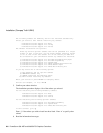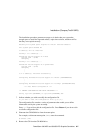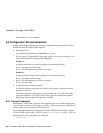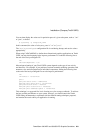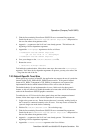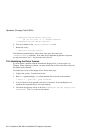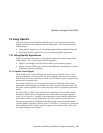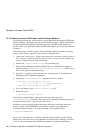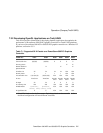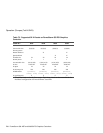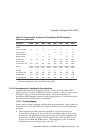Operation (Compaq Tru64 UNIX)
7–10 PowerStorm 300 AGP and 300/350 PCI Graphics Controllers
Allocating 16 bits per texel allows more textures to be stored in the texture cache and
may provide slightly higher rasterization rates. On the other hand, using 32 bits per
texel provides better texture resolution in just the same way that a color frame buffer
with 8 bits per color component has better color resolution than a frame buffer with 4
bits per color component.
•
The rasterization rate for PowerStorm 300/350 PCI graphics controllers is twice as fast
for bilinear texture filtering as for trilinear texture filtering.
•
Software developers should use OpenGL Version 1.1 texture objects when an
application uses more than one texture.
7.3.2.1.2 Alpha Buffers
PowerStorm 300/350 PCI graphics controllers on the Tru64 UNIX platform do not provide
an alpha buffer (i.e., they have zero alpha planes). Few applications actually need an
alpha buffer. The two operations that depend on the values stored in the alpha buffer are:
•
Storing alpha values so that they can be read later
The application needs an alpha buffer if it must store alpha values for later retrieval by
the glReadPixels function with one of the following values:
–
GL_ALPHA
–
GL_RGBA
–
GL_LUMINANCE_ALPHA
•
Blending using a destination alpha value
The application needs an alpha buffer if it calls the glBlendFunc function with one of
the following values:
–
DST_ALPHA
–
ONE_MINUS_DST_ALPHA
–
ONE_MINUS_DST_COLOR
–
SRC_ALPHA_SATURATE
In conformance with OpenGL, when an alpha buffer is not present, glReadPixels returns
1.0 for all alpha values, and OpenGL uses 1.0 for all destination alpha values when
computing blending factors.
Note that all source-alpha related aspects of the rasterization and per-fragment portions of
the OpenGL pipeline (blending, alpha test, alpha related texturing functionality) are
supported by PowerStorm 300/350 PCI graphics controllers on the Tru64 UNIX platform.



